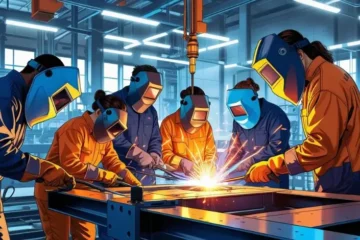How Flatbed Trailers Revolutionize Transportation?

Flatbed Trailers
Imagine a world where transportation is limited to small, confined spaces. Now, enter the game-changer: flatbed trailers. When one spots a sign that reads flatbed trailers for sale, it’s not just a purchase; it’s an investment in a transportation revolution. This article helps one understand how these trailers have reshaped the transportation landscape.
Breaking the Barriers of Shape and Size
Unlike traditional enclosed trailers, flatbeds don’t have walls or a roof. This design is intentional and genius. It means they can carry loads that are irregular in shape or oversized. From construction equipment to large timber logs, flatbeds accommodate them all. This adaptability opens up new possibilities for transporting items previously deemed awkward or hefty.
Speedy Loading and Unloading Times
Time is money, especially in the transportation industry. Flatbed trailers offer the advantage of being accessible from the top, sides, and rear. This flexibility translates to quicker loading and unloading times. Think of it as the difference between using a funnel to pour liquid into a bottle and trying to do it without one. The former is simply faster and more efficient. This efficiency not only enhances productivity but also reduces wait times for both shippers and recipients. Furthermore, the unobstructed access allows for seamless crane loading and forklift operations, optimizing the entire logistics chain.
Versatility Across Industries
Flatbed trailers aren’t just for one industry. They serve multiple sectors, from agriculture to construction and even entertainment. It’s like having a multi-purpose tool in your kit. Need to transport a tractor? No problem. Got a massive art installation for a city event? Flatbed’s got you covered. Their adaptability is genuinely commendable. This versatility has transformed how industries collaborate and innovate, allowing for the transportation of diverse cargo without requiring specialised trailers for each application.
Hale Trailer states, “A standard flatbed has a main deck height of 5′ and can carry loads that stand up to 8’6″ high. Trailer dimension restrictions may vary based on state, so be sure to speak with one of our trailer experts who can help you find the perfect trailer for your fleet.”
Enhanced Safety Mechanisms
Transporting goods, especially heavy or oversized ones, comes with challenges. Flatbed trailers have features like tie-down hooks and wide load flags, ensuring the cargo remains secure during transit. It’s akin to wearing a seatbelt in a car; it provides that extra layer of protection, ensuring the safety of both the cargo and other road users. These safety mechanisms have not only reduced accidents but have also increased public safety awareness around large loads. Additionally, technological advancements have further boosted flatbed trailers’ reliability by preventing load shifts.
Cost-Effective for Businesses
Flatbed trailers can be a cost-effective choice for businesses in the long run. Their ability to carry varied loads means companies don’t need to invest in multiple types of trailers. Moreover, the speedy loading and unloading times translate to reduced labor costs.
It’s like opting for an all-you-can-eat buffet at a fixed price rather than ordering multiple dishes separately. This cost-effectiveness has contributed to businesses’ bottom lines by optimising resource allocation. The versatility of flatbeds minimizes the need for specialized equipment, saving both capital and operational expenses.
In the grand tapestry of transportation, flatbed trailers emerge as a vibrant thread, weaving convenience, efficiency, and versatility into the industry. They have simplified the challenges of transporting varied cargo and paved the way for businesses to operate more cost-effectively. The next time someone mentions flatbed trailers, one can appreciate their revolutionary impact on transportation. After all, in an ever-evolving industry, it’s innovations like these that drive progress forward. Read more










